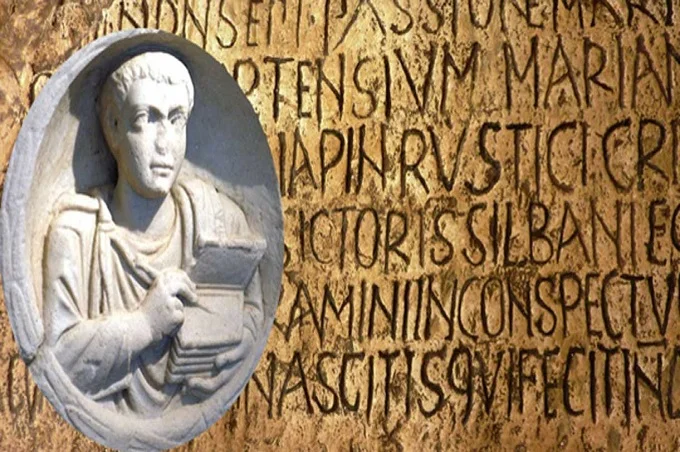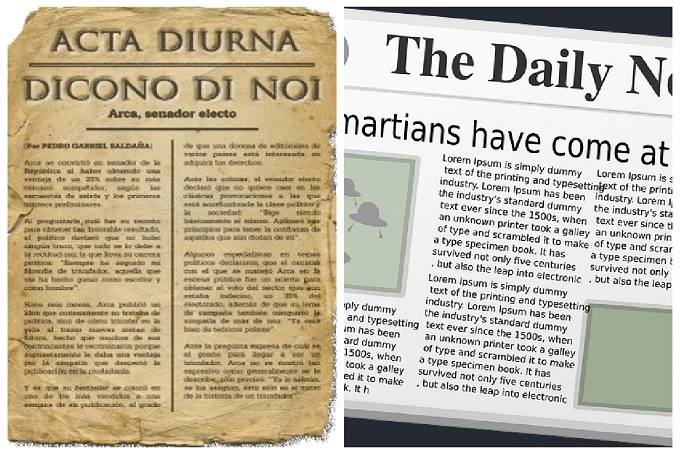Acta Diurna: What was written about by the first newspaper in the history of mankind, created before our era by Julius Caesar

According to Cicero, at the dawn of Roman history, the Great Pontiff wrote down all the most important events on special white tablets. The names of the consuls and magistrates of the Republic were written on them. These plaques were hung up in public places for all citizens to see. Then, for reasons unknown, this was discontinued. The citizens of Rome stopped receiving official information in their daily lives. This gave rise to gossip and hoaxes. In 59 BC, Great Caesar decided to end this and created a kind of daily bulletin, filling an unfortunate gap.
People’s newspaper

Julius Caesar ordered government officials to post daily minutes on a whiteboard, called a scrapbook, all the announcements. These boards were placed in all public places. For example such as the Roman Forum, so that everyone could read the bulletin. The historian Suetonius wrote about this in his writings on Caesar’s life.
This edition was called Acta diurna, which means daily acts, sometimes translated as daily public records or poetically as the daily newspaper. Most historians tend to think it was the first swallow of all modern media. Certainly, it is bigger now, but it was much more than one could imagine and think of in those days.
The newspaper contained information about all the issues that the Senate considered. It published the laws issued and the public resolutions of the magistrates. It supplemented the official picture with secular gossip, criminal and other news, and information on the public character. It informed about births, deaths, various events, and celebrations.
Of course, it did not appear every day but with enviable regularity. Plaques were on public display for a few days, and then they were taken down. The newspapers were kept in the archives and all other documents relating to life in the Roman Empire. Public and private scribes made copies of the journals. They added all the current news to the official information and then sent them to their governors for distribution to the public in all the provinces.
When Julius Caesar was assassinated, Emperor Augustus did not interrupt the work he had started. The newspaper continued to be published. Everyone was well aware of how useful this state propaganda was to the tranquillity of the empire’s citizens. The only change was that it was no longer obligatory to publish the minutes of the Senate. According to scholars, the newspaper contained text and various graphic images, and most of them were drawings illustrating the battles and victories of the great Roman Empire.

Just like today, there was a parody in those days. It is not known for certain what the content of these publications was. They most likely resembled the works of some Latin authors. Petronius’ Satyricon, for example. It parodied some particularly ridiculous Acta diurna news. It wrote about how many boys and girls were born on a certain estate; how many bushels of wheat were harvested; how many oxen were bought, and by whom. Very valuable information for the public. Although modern publications may be better in this respect?
The ancient Roman writer Pliny the Elder also described some amusing stories he read in the Acta diurna. One was the story of a dog’s unwavering loyalty to his master. Another told of a conflict between two families during a funeral over an inheritance. A third told of a lawsuit taking place at the time. The historian Cassius Dio also described an interesting story. He said that an architect had saved a port from collapse, and Emperor Tiberius did not permit his name to be published as he was jealous of the great achievement.
The Roman philosopher and politician Lucius Annaeus Seneca lamented that the newspaper had too long lists of divorces. He thought the Romans who would read it would set a negative example, and the number of these acts would only increase.
Acta diurna was published for a very long time. Information about its publication is reflected in written sources up to 235 AD. Some historical texts mention the journal until 330 AD, and that is up to the time of carrying over the empire’s capital to Constantinople. To the great regret of scholars and scientists, not a single original copy of the Acta diurna has survived.




